Intel’s Jason Kimrey: Windows 7 End-Of-Life Opportunity Is ‘Unprecedented’
“[There are roughly] 40 million devices that still are [running] Windows 7 today that have to be upgraded [with Microsoft ending support and security updates for Windows 7 effective Jan. 14, 2020],” said Intel Channel Chief Jason Kimrey. “This is an incredible opportunity. If you look at the data from any of our client [device] partners they're doing well because of this opportunity. Now is the time to really finish the job.”
Processor Shortage Is ‘Getting Better Every Day’
Intel U.S. Channel Chief Jason Kimrey told CRN that the chip giant has “prioritized” the commercial market for processor supply shipments with the result being the shortage in the channel is “getting better every day.”
Kimrey, who has made it a priority to step up communication with partners regarding the shortage, said he has seen a marked improvement in supply through a lot of partners.
[Related: Jason Kimrey: Intel’s Data-Centric Platform Strategy Is A Winning Hand For Partners]
“I think the key message here is the client [device] business is going well,” he said in a recent interview. “We still have this incredible opportunity leading up to Jan. 14, [2020,] to capitalize on this [Windows 7 end-of-life] opportunity. I think our supply is healthy to target that market, and I think that we've got an incredible opportunity leading up to that and then to continue fulfilling that opportunity as we go through the first half of 2020.”
Intel CEO Bob Swan last fall said in an open letter to partners and customers that the company was addressing the shortage by investing an additional $1 billion in capital expenditures on 14-nanometer manufacturing sites in Oregon, Arizona, Ireland and Israel. "This capital along with other efficiencies is increasing our supply to respond to your increased demand," he had said.
Kimrey said Intel has stepped up communication on the shortage to distributors, national partners, Intel Technology Partner program members and OEMs.
“I think our partners would say that it's been materially better in the first half of this year than in the past, and that's been a big part of my strategy: to be more transparent and to share information,” he said.
What follows is an edited transcript based on CRN's interview with Kimrey, who also talked about the impact of Intel's F-series processors on supply, the Device-as-a-Service opportunity for partners and what its data-centric strategy means for the channel.
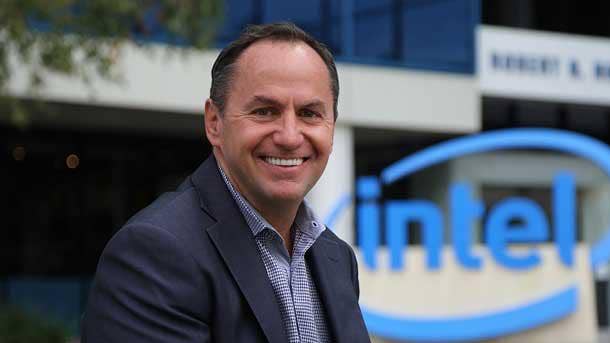
What is Intel's progress with the CPU shortage?
So on the shortage side, [Intel CEO] Bob [Swan] (pictured) announced last fall that we were going to bring on a billion dollars' worth of new fab capacity, and essentially we're starting to see that increased capacity start to provide the output that we need.
I think in [the third quarter], we believe that our output will meet demand, but we'll still have some challenges in product mix. So we're still kind of working through that, but I think by [the fourth quarter], we expect supply to meet demand and, even those areas of where we've had product shortages [on] the small core side, we [expect to meet] demand across our different products by then. So we're on track with that increased output in 14-nanometer [processors]. But then also we're on track with our 10-nanometer part availability that we previously announced with Ice Lake.
When you say small core, are you talking about lower-end processors on the client or server side?
Mostly client. This tends to be in the Celeron and Pentium family.
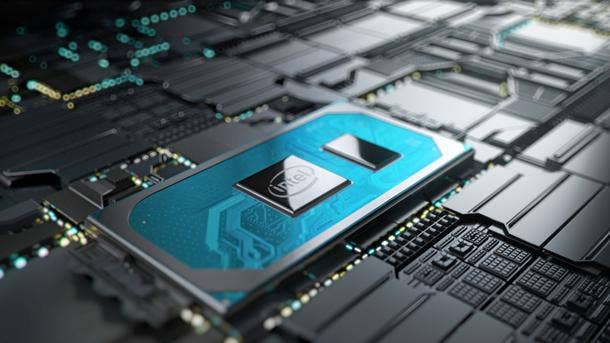
What is Intel's strategy for keeping partners informed about the shortage?
I think our partners would say that it's been materially better in the first half of this year than in the past, and that's been a big part of my strategy: to be more transparent and to share information.
So first, working through our distributors, keeping them very much up to date, because there's so many customers that they touch that we don't directly. We've done [with] large, more national partners, a lot of direct communication. A lot of coordination also with our OEMs, making sure that even the large OEMs and Intel are consistent in the message that we're communicating in terms of what's going on with supply. And then the last piece, through our Intel Technology Partner program, we have done a couple of direct-to-partner webinars and communications on supply that I know [partners have] really valued and appreciated.
Overall, I know we've communicated a ton more in terms of what's going on in the first half then we were able to at the end of last year. That's not to say we've gotten to everyone, but we've really tried to hit through our broad channel programs, our large covered accounts, through distribution, and with our channel OEMs, to drive more broad communication in terms of what's going on, the situation that we're in and when we expect it to get better. And our partners I believe have valued that transparency.

What impact has that increased level of communication had on partners?
I think it's enabled our partners to plan better. I think at the end of the day, it's about enabling them to communicate with their customers supply availability and supply timelines and when they're going to be able to get product shipments. This issue, I think that we're all in it together, and I think what we've tried to do is arm our partners and customers with the most accurate information, so they can plan their purchases and be able to map their business accordingly.
So what's the message that the partner sales reps in the field should be telling their customers about supply, demand and what processors they should be using?
We've taken a more targeted approach in terms of communicating that, but I think the message is, it's getting better every day, and we are supplying the market. We prioritized the commercial market first and foremost, and I think supply availability has already gotten a lot better through a lot of our partners. I think the key message here is the client business is going well. We still have this, incredible opportunity leading up to January 14 to capitalize on this opportunity. I think our supply is healthy to target that market, and I think that we've got an incredible opportunity leading up to that and then to continue fulfilling that opportunity as we as we go through the first half of 2020.
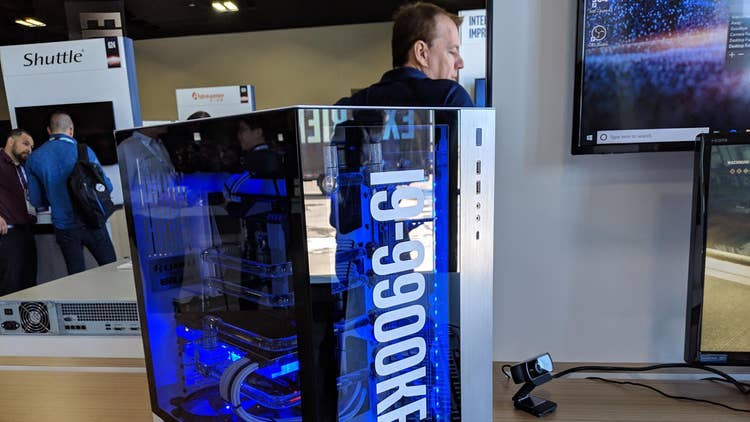
How big of an impact has the F-series CPUs had on alleviating the shortage in the channel?
It's been helpful. Our [Client Computing Group] numbers, I think in [the first quarter], we increased year-over-year in a supply-constrained environment, and this was part of it.
There are a lot of factors that have gone into play to really enable us to drive that business forward. Our fabs and our manufacturing, they've done a phenomenal job of bringing this new capacity online, but being able to sell this part has been has been a great way to alleviate it.
Our distributors have been incredible partners in creating some of these bundles to make it more price competitive. Again, it's not lost on me a single day that this overall supply situation has been a challenge, but we're pulling every lever we can to address it, and I would say this has been one way. Based on the increase in percentage of volume that we've seen so far is evidence that our customers are responding to that not only as a solution but a very viable solution that meets their needs.
Has Intel done anything in the past similar to what it's doing with the F-series?
I can tell you that we are committed to this strategy moving forward. This particular product has a long lifecycle ahead of it, and it's one that we're committed to because we actually see the benefit of doing it, and our customers have responded well to it. So I think the situation, I think we had to get creative, and I think we did it in a way that really met our customers' needs. I can say that we're 100 percent committed to this moving forward.
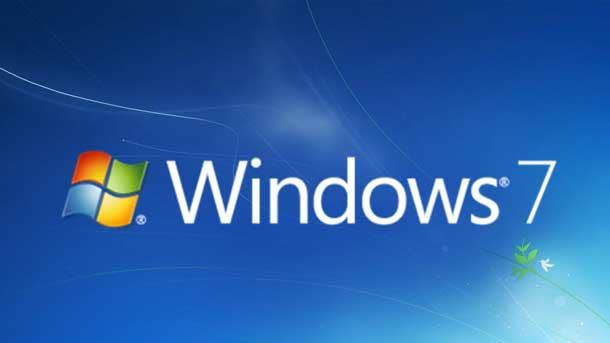
How does Windows 7 end-of-life play into the shortage?
January 14, 2020 is the final day from Microsoft for [security updates and] support for Windows 7. There is an unprecedented market opportunity leading up to that. [There are roughly] 40 million devices that still are [running] Windows 7 today that have to be upgraded. This is an incredible opportunity.
If you look at the data from any of our client [device] partners they're doing well because of this opportunity. Now is the time to really finish the job. Let's get after it. Let's go after and target that opportunity. We've got great designs. We have an improving supply situation. This market opportunity, strong economy — all these factors. We believe this is the time to capitalize on this opportunity together.
How big of a marketing campaign are you putting around that to drive partner demand?
We jointly partnered with Microsoft around this "Make the Shift" Campaign, which is intended to provide halo marketing but also give our partners clear tools to be able to customize and create campaigns to go after and target that market opportunity together. We're going to continue to invest in that through the second half of this year and into next, and we believe it's a good joint story with Microsoft. With the partners, with our OEMs, with Microsoft, it's just a great example of an ecosystem-based approach to tackling this problem together.
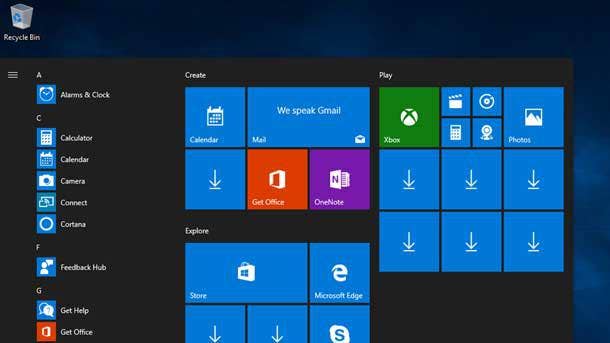
What are you seeing as far as where there is still reluctance to switch from Windows 7 to Windows 10?
It could be a government customer or a healthcare customer that has some sort of legacy application that only runs on Windows 7 that that needs to run for some sort of mission-critical environment. That tends to be the only reason that people are hesitant to move from Windows 7. There's some sort of application dependency.
At this point, we see, every day, customers either figuring out a mitigation strategy, a migration strategy or just moving everything except maybe a few standalone systems. And there are programs and support from our partners, from Microsoft to enable migration of those apps from legacy environments to a modern Windows 10 environment. That tends to be why somebody doesn't move, but as we get closer, it feels like those examples are becoming fewer and fewer.

What impact will Intel's Project Athena laptop innovation program have on the channel?
So Athena in its first iteration is primarily a consumer play. But on the commercial side into the channel, first and foremost it's evidence that Intel's not sitting still as it relates to innovation in the PC platform, that it is still the core productivity device that sits on people's desks, and that there's so much opportunity for innovation that still exists in this space, and we're excited about it. So this platform-based approach is the next round of innovation that you're going to see Intel deliver with its partners into the market, starting first in consumer, but certainly, as it always does, will bleed into commercial.
If you look at some of the core tenets of Project Athena, you got [artificial intelligence] built into the PC platform as a brand-new concept. You see the importance of Wi-Fi 6 and 5G because of that the importance of connectivity and bandwidth. As more and more data and more access points come online, we must have things like 5G and Wi-Fi 6 support to be able to support this massive amount of data. And then I think continuing this, instant-on PC: there's a zero willingness to wait and an expectation that the PC should always be able to power up instantaneously. I think what we're excited about is the innovations that will be built on top of it. But it's more than just another thin-and-light form factor. it's around a whole new set of capabilities.

Can you describe Intel's platform strategy and why it matters to partners?
The thing that some people like to say is that Moore's law is dead. That's not true at all. It's evolving, and it's evolving, because you just look at the massive amounts of data that's coming online every single minute, every day, every year. The CPU alone can't handle it all, so it requires CPU and node enhancements. It requires innovative memory technologies, huge advancements in connectivity, software Investments and in security underlying all of that.
So we wrap [these elements] into what I'll call this data-centric platform strategy, but it's really important to look at the advancements that are happening in each one of those. And then if you think about the 15,000-plus software engineers that Intel has, constantly working with the software community to make sure that those applications, which are really what powers businesses today, run best on Intel architecture and Intel platforms.
So you're pitching Intel to partners as a one-stop shop for data-centric compute needs.
It's the underlying foundation for our partners' data strategy. I may be biased, but I wouldn't place my bets anywhere but with Intel. I think we've got the proven track record. We've got the Investments. And again, it's that ecosystem of not just in hardware, but it's with that software ecosystem and making sure that everything runs best on Intel.

Can you give an example of how this data-centric strategy is driving application performance?
Look at SAP HANA. It basically powers vast percentages of enterprises today. One of the biggest pain points for enterprises today is restart times around SAP and SAP Hana. And a lot of that's because you have to take down a complete system and then power it back up and that can take IT organizations — it's usually a weekend exercise. By putting systems in with persistent memory, it's always available because it's persistent, you basically cut restart times from four hours to four minutes.
So you're just talking about game-changing [technology] that's saving real time, real dollars for people inside of IT organizations because of advancements in memory, coupled with these with these CPU advancements. So that's one example of where this Optane persistent memory really has played a critical role in addressing some of the most critical issues for businesses today. And it only works with our Xeon scalable processors.
SAP talked about it at their big Sapphire event on stage with CEO, so it's a huge bet that we've made with them. It's a lot of where we put software expertise. Now we're investing with the largest deployment partners of SAP to make sure they have access to this technology and really getting it out to market faster. Because this isn't just a step-change CPU advancement. This is a new architecture, a new design, and it really takes an industry approach to bring that to market.
How have Optane sales been in the channel?
It's meeting our expectations, which we set pretty aggressive growth expectations for. But we are still early in what we see is a very long journey in terms of driving this as it ramps. You're going to see us continue to advance on our CPU and the node performance, but it's investments in these innovative memory and connectivity technologies that are as important as the CPU, because [everything combined] is what's going to drive that that performance.
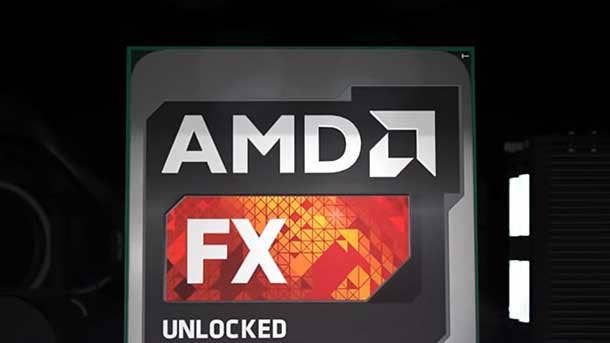
What is Intel doing to deflect against AMD's efforts?
We welcome the competition, and we go back to our data-centric strategy. Its CPU, its memory, its connectivity, its software, its security, and you really have to look across that platform. I think those investments that we're making, they're paying off, and I think the investments that we're making in that software ecosystem can never be underestimated, because those are real-world workloads that matter to customers and, at the end of the day, are what really drive their business.
So we are no-blink on our data-centric strategy. We think that's ultimately what customers care about, and I think that our commitment to the channel and our commitment to our partners for the last [several] decades is why I think customers should — I hope would — continue to want and see the value of partnering with us because of that fully integrated platform strategy.
Particularly in light of the shortage, where partners may be getting asked, "should we be looking at these AMD systems?" what should they be saying to customers about why Intel and not AMD?
I go back to the benefits of Intel. I think you have to look at system-level performance, and I think you have to look at real-world workloads and benchmarks, and I think, by and large, the data supports this strategy. I encourage our customers to evaluate what's available and what makes the most sense, but I believe that our investments across the ecosystem, with software, with the memory technology, with the processors, that's the strategy to be able to handle where the markets going, where data's going, to be able to just handle the complexity of the workloads. I think our strategy is the one to bet your business on.
How are Intel's software Investments impacting channel partners? Is there training and enablement on that side, whether it be for OpenVINO, One API or other software packages?
Through the program, we announced an OpenVINO contest and training at [Intel Partner Connect], and we've seen a lot of customers rallying around that. Through our [Intel Technology Provider] training engines or [artificial intelligence] builders — and there's some of the other builder-type programs — [we are] providing more training and access to not just the CPU, but also things like what does One API mean to them? I think as the world moves towards software, becomes more software-defined, it's really forcing a lot of our traditional hardware resellers to build up that software acumen and really understand how the two come together. And again, that's where I think we're trying to make that information more available through better training engines than we've had in the past.
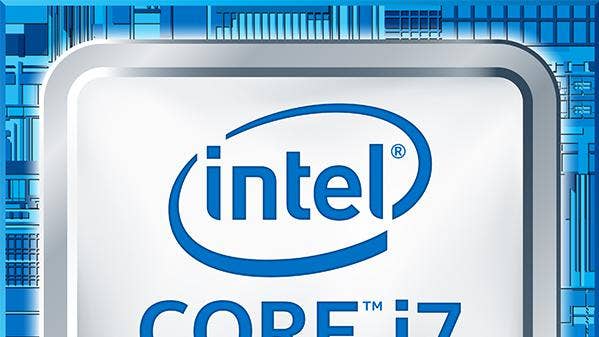
What is Intel doing to stand out on the commercial client side?
As it relates to client, the world is moving to a [Device-as-a-Service model]. Our partners and [managed service providers] are moving to a DaaS-based model quickly, and I think we see that market only going up from here. And an "as-a-Service" model can't simply be about financing, a new creative lease. It has to be about how are you delivering better value or lower cost to your customer.
[For that,] I think our vPro 2.0 platform is unparalleled. It provides the fundamental backbone of a manageability strategy, a security strategy and performance. I think if you look across the things that customers are looking for every day, the vPro platform is what enables that. We've got over a decade's worth of investment in that platform to provide what we believe becomes the baseline for anyone's DaaS strategy.
Can you kind of elaborate on what DaaS looks like on a practical level for partners?
Intel, at the end of the day, we're not going to be delivering an end-to-end DaaS offering. That's what we're enabling distributors, solution providers and MSPs [to do]. And I think what we're trying to do and what we are doing is providing not only the technologies but the technology suites and the capabilities to activate these offerings faster than what was possible in the past. Cloud-based provisioning is one example of how we're making it easier to activate some of these vPro features in a more timely way. And you'll see this concept around cloud-based provisioning becomes really critical to being able to deliver on the vision of vPro.
Can you talk about the level of uptake you're seeing within the channel of DaaS strategies?
There is tons of uptake in the build-out of capabilities. We're seeing every day examples of customers that are moving to more of a DaaS model. What's interesting is that everyone from Accenture to CDW and Insight, down to smaller MSPs, everyone is looking at how do you deliver the platform, these capabilities on top of the hardware? So I think everyone's building out an offering, and I think the uptick varies. I do think we've got a lot of customers right now that are focused on getting to Windows 10 and finishing migration. I think that's job one. And then I do believe as that plays out more and more customers will be looking at really going faster with a DaaS strategy long-term.